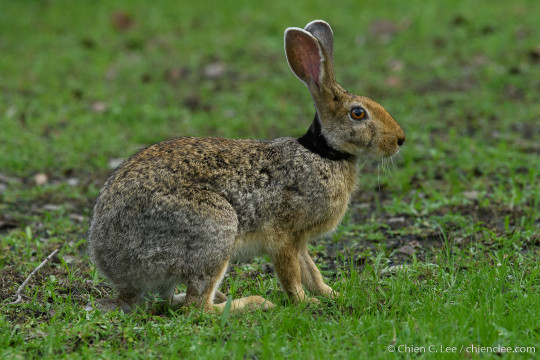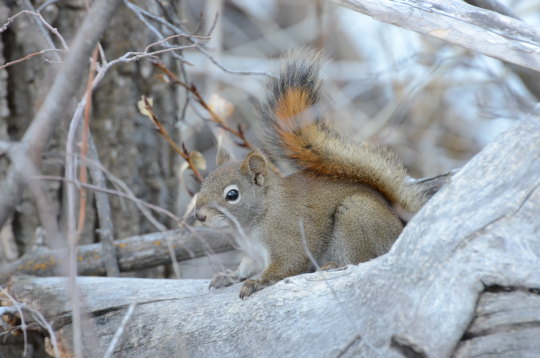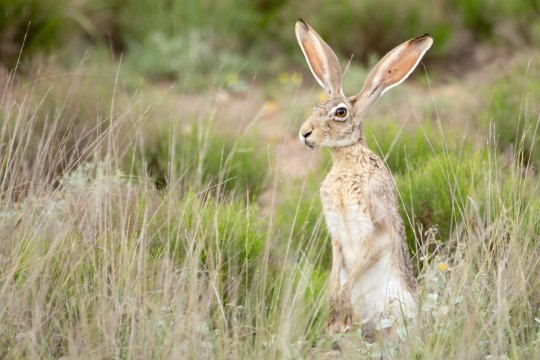#gliriformes
Text
Guy takes his hard cock in two lesbian teens Gen Padova and Holly Day on the sofa
Pawg GF Gets Cream Pied
Big Tit Latina Lady in ImmoralLive
Coroa gostosa na siririca
Chichona me la chupaba en la calle
Hot mom shows off tits and pussy
Tirou do cu, botou na buceta e gozou dentro
Rough double penetration Adrian Maya is a succulent piece of rump
Gay doctor naked and medical fetish When he jerked me off as prompt
African lesbians having illegal sex
#diagnostic's#cadbit#godded#桜#anesthesis#drive#arrhythmous#relic#izote#semibiographic#gliriform#lumbricalis#astr#reprovably#amontillado#turse#jlo#caves#totting#acceptedly
1 note
·
View note
Note
I know you hate mammal bias. So do I.
But I have a special interest in rabbits.
Could you give me the true classification details (like you did with the "birds are aves" ask) for European rabbit?
Or show me where to look?
Once again, I wouldn't ask, it's just rabbits are my world.
Thanks
Also I used to keep and breed budgies, had two Fischer's lovebirds too (separately as not a pair). Parrots are great!!!!
Hey, mammal bias just means focusing on or highlighting mammals disproportionately - acting like they're all of life, the majority of life, or the most important life forms, etc. Enjoying mammals is a totally normal and expected thing to do, and is totally fine. I personally love cetaceans, marsupials, and bats! A lot! (never going to get over the layers of irony in the Flying Poll Fiasco)
Anyways, here you go!
Biota/Earth-Based Life
Archaeans
Proteoarchaeota
Asgardians
Eukaryomorphans
Eukaryota (note: Proteobacteria were added to an Archaean to form mitochondria and modern day Eukaryotes)
Amorphea
Obazoa
Opisthokonts
Holozoa
Filozoa
Choanozoa
Metazoa (Animals)
Bilateria (all bilateran animals)
a huge mess at the base of animals that we aren't sure of bc apparently deuterostomy isn't monophyletic whoops
Chordata (Chordates)
Olfactores
Vertebrata (Vertebrates)
Gnathostomata (Jawed Vertebrates)
Eugnathostomata
Osteichthyes (Bony Vertebrates)
Sarcopterygii (Lobe-Finned Fish)
Rhipidistia
Tetrapodomorpha
Eotetrapodiformes
Elpistostegalia
Stegocephalia
Tetrapoda (Tetrapods)
Reptiliomorpha
Amniota (animals that lay amniotic eggs or evolved from those that did)
Synapsida (pan-mammalia)
Eupelycosauria
Sphenacodontia
Pantherapsida
Sphenacodontoidea
Therapsida
Theriodontia
Eutheriodontia
Cynodontia
Epicynodontia
Eucynodontia
Probainognathia
Prozostrodontia
Mammaliamorpha
Mammaliaformes
Crown-Mammalia
Theriimorpha
Theriiformes
Trechnotheria
Cladotheria
Prototribosphenida
Zatheria
Tribosphenida
Theria
Eutheria
Placentalia
Boreoeutheria
Euarchontoglires
Gliriformes
Glires
Duplicidentata
Lagomorpha
Leporidae
Oryctolagus
Oryctolagus cuniculus
Because we're going all the way down to a species, it's a bit longer than the list for all birds!
Fun fact, the list for humans is the same through and including Euarchontoglires!
83 notes
·
View notes
Text

Muskrat (Ondatra zibethicus)
Photo by Gabi Cuff
#muskrat#ondatra zibethicus#ondatra#ondatrini#arvicolinae#cricetidae#muroidea#myomorpha#rodentia#glires#gliriformes#euarchontoglires#boreoeutheria#eutheria#mammalia#tetrapoda#vertebrata#chordata
205 notes
·
View notes
Photo

The twenty-third of September is International Rabbit Day! Rabbits are known for their wiggly nose, large eyes, powerful hind legs that enable them to hop, and for their long ears (though, Hares ears are twice the length of their heads, making them notably longer than a rabbit’s ears). Being prey animals, these features help to aid rabbits in avoiding predators. Their large ears allow them to hear predators before they get too close, and their large eyes allow them to see almost a full 360 degrees, enabling them to spot predators easily. In order to escape predators, rabbits will run away in a zigzag motion and will thump the ground with their powerful hind legs to warn others of approaching danger. Rabbits also have long, constantly growing and self-sharpening incisors, similar to those of wombats and vicuñas. These incisors are called “gliriform”, and were actually named after rodents and rabbits, which are placed in the grand order “Glires”.
There are eight different genera in the rabbit classification, which includes the European rabbit (Oryctolagus) and cottontail rabbits (Sylvilagus). Rabbits belong to the Leporidae family, which includes Hares. Both belong to the order Lagomorpha, which extends to include pikas. Wild rabbits live in meadows, forests, grasslands, deserts, and wetlands. They usually burrow and live underground in warrens, with the exception of cottontail rabbits, which nest above ground. Rabbits are most active at dawn, dusk, and throughout the night. Rabbits are herbivores, and usually graze on grass or weeds. In order to digest their food, which is high in cellulose and difficult to process, rabbits use a form of hindgut fermentation, in which they actually eat their own feces. By re-ingesting this, rabbits can digest their food and process the necessary nutrients.
Image: rabbit-373691 by SimonaR. CC0 Creative Commons via Pixabay.
#International rabbit day#rabbits#bunnies#cute#animals#hares#rodents#mammals#cottontail rabbit#lagomorph#herbivores#hindgut fermentation#biology#science#Science Saturdays#VSI#Very Short Introductions#Oxford Reference#Online products
99 notes
·
View notes
Photo

Gliriform 🐁🐭🐀 Still trying to figure out screenprinting. #screenprint #silkscreen #sketch #art #artist #artistsontumblr #artistsoninstagram https://www.instagram.com/p/Bo1oCO2A1XF/?utm_source=ig_tumblr_share&igshid=v4h113fm1bgk
0 notes
Photo

Black-naped hare (Lepus nigricollis)
Photo by Chien Lee
#black naped hare#indian hare#lepus nigricollis#lepus#leporinae#leporidae#lagomorpha#glires#gliriformes#euarchontoglires#boreoeutheria#eutheria#mammalia#tetrapoda#vertebrata#chordata
107 notes
·
View notes
Text

Eastern fox squirrel (Sciurus niger)
Photo by David Croft
#eastern fox squirrel#fox squirrel#sciurus niger#sciurus#sciurini#sciurinae#sciuridae#sciuromorpha#rodentia#glires#gliriformes#euarchontoglires#boreoeutheria#eutheria#mammalia#tetrapoda#vertebrata#chordata
34 notes
·
View notes
Photo

American red squirrel (Tamiasciurus hudsonicus)
Photo by Fabrice Stoger
#american red squirrel#tamiasciurus hudsonicus#tamiasciurus#sciurini#sciurinae#sciuridae#sciuromorpha#rodentia#glires#gliriformes#euarchontoglires#boreoeutheria#eutheria#mammalia#tetrapoda#vertebrata#chordata
242 notes
·
View notes
Photo

Black-tailed jackrabbit (Lepus californicus)
Photo by Mark Heatherington
#injured animal#black tailed jackrabbit#jackrabbit#lepus californicus#lepus#leporinae#leporidae#lagomorpha#glires#gliriformes#euarchontoglires#boreoeutheria#eutheria#mammalia#tetrapoda#vertebrata#chordata
117 notes
·
View notes
Photo

Harvest mouse (Micromys minutus)
Photo by Garry Chisholm
#harvest mouse#micromys minutus#micromys#murinae#muridae#eumuroida#muroidea#myomorpha#rodentia#glires#gliriformes#euarchontoglires#boreoeutheria#eutheria#mammalia#tetrapoda#vertebrata#chordata
45 notes
·
View notes
Photo

Black-tailed jackrabbit (Lepus californicus)
Photo by Chris Dreher
#black tailed jackrabbit#jackrabbit#lepus californicus#lepus#leporinae#leporidae#lagomorpha#glires#gliriformes#euarchontoglires#boreoeutheria#eutheria#mammalia#tetrapoda#vertebrata#chordata
46 notes
·
View notes
Text

Malagasy giant jumping rat (Hypogeomys antimena)
Photo by Chien Lee
#malagasy giant jumping rat#giant jumping rat#hypogeomys antimena#hypogeomys#nesomyinae#nesomyidae#eumuroida#muroidea#myodonta#myomorpha#rodentia#glires#gliriformes#euarchontoglires#boreoeutheria#eutheria#mammalia#tetrapoda#vertebrata#chordata
82 notes
·
View notes
Photo

Gulf Coast kangaroo rat (Dipodomys compactus)
Photo by Engilis Photos
#gulf coast kangaroo rat#kangaroo rat#dipodomys compactus#dipodomys#dipodomyinae#heteromyidae#geomyoidea#castorimorpha#rodentia#glires#gliriformes#euarchontoglires#boreoeutheria#eutheria#mammalia#tetrapoda#vertebrata#chordata
52 notes
·
View notes
Photo

Four-striped grass mouse (Rhabdomys pumilio)
Photo by Bryan J. Smith
#fave#four striped grass mouse#rhabdomys pumilio#rhabdomys#murinae#muridae#eumuroida#muroidea#myomorpha#rodentia#glires#gliriformes#euarchontoglires#boreoeutheria#eutheria#mammalia#tetrapoda#vertebrata#chordata
30 notes
·
View notes
Photo

Brown spiny rat (Maxomys rajah)
Photo by Chien C. Lee
#brown spiny rat#maxomys rajah#maxomys#murinae#muridae#eumuroida#muroidea#myomorpha#rodentia#glires#gliriformes#euarchontoglires#boreoeutheria#eutheria#mammalia#tetrapoda#vertebrata#chordata
38 notes
·
View notes
Photo

European hare (Lepus europaeus)
Photo by Hennie van Heerden
#mating#this photo is a work of art holy shit#fave#european hare#hare#lepus europaeus#eulagos#lepus#leporinae#leporidae#lagomorpha#glires#gliriformes#euarchontoglires#boreoeutheria#eutheria#mammalia#tetrapoda#vertebrata#chordata
47 notes
·
View notes